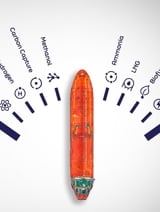In the October issue of Horizons, we took a look at the Lloyd’s Register Foundation Heritage & Education Centre’s digitisation of the Ship Plan and Survey Report Collection, which at the time had over 238,000 documents available to view and download on the Centre’s website. Since then, a further 272,000 documents have been added to the collection, meaning a remarkable 501,000 documents are now freely available. The Heritage & Education Centre’s Archivist, Max Wilson, has delved deep into the digitised collection and curated five interesting items from the most recent upload.
General Arrangement Plan for steam-powered crane
This General Arrangement plan for a Japanese floating crane dates back to March 1938 and is one of the rarest documents we have identified in the Collection so far. The crane, which measures 50 tons, was built by the Ishikawajima Shipbuilding & Engineering Company. The plan depicts the crane’s various platform designs and dimensions, and even includes a reference to ancient Japanese calendar dates that have been converted to the Gregorian calendar.
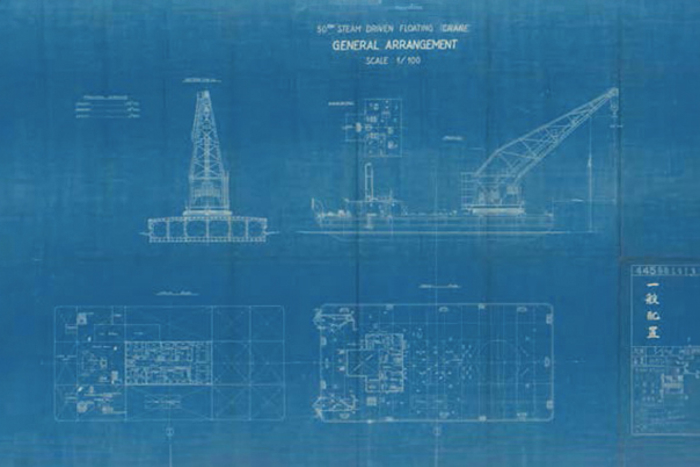
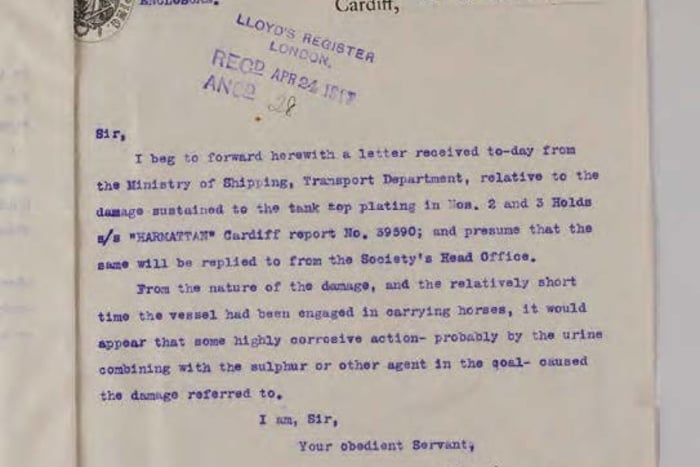
The intriguing case of corrosion in tank plating for Harmattan
This unique letter from LR’s Cardiff Surveyor, A.B.R Harris, solves the mysterious case of the Harmattan’s tank plating being damaged. The cause? Horse urine. After several surveys, Harris was able to deduce that the vessel ‘had been engaged in carrying horses’ and that ‘highly corrosive action, probably by the urine’ combined with chemicals in the coal that resulted in damaged plating.
Steel Yards & Bowspirit Plan for Lauriston
Dated 12 May 1892, this plan for the Lauriston, built by Workman, Clark & Co was released in February. The Belfast-built cargo ship was sold to Soviet Union in 1919 and renamed Tovaritsch. Lauriston was then used as a training ship. The ship was sunk at Archangelsk in 1943 by German bombers during the Second World War. The ship later gained notoriety in Russia, appearing in a selection of stamps in 1981.
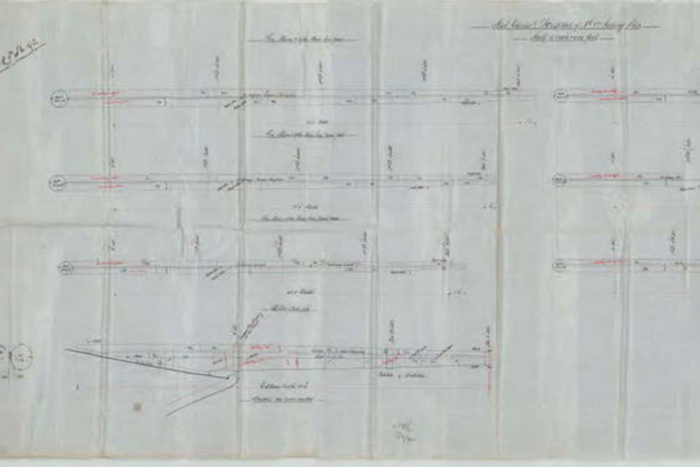
Colours & Casings for Canning
The multi-coloured profile and deck plan for the steamer Canning is particularly striking and includes specifications on the ship’s bulkheads, plating and engines. Canning was built in Leith in 1905 by John Cran & Company.
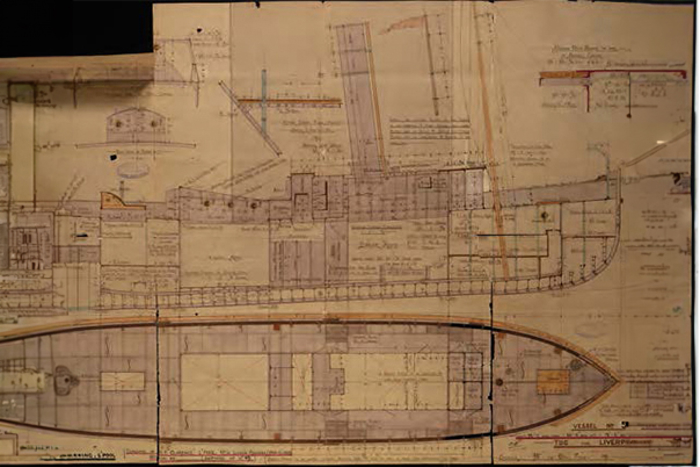
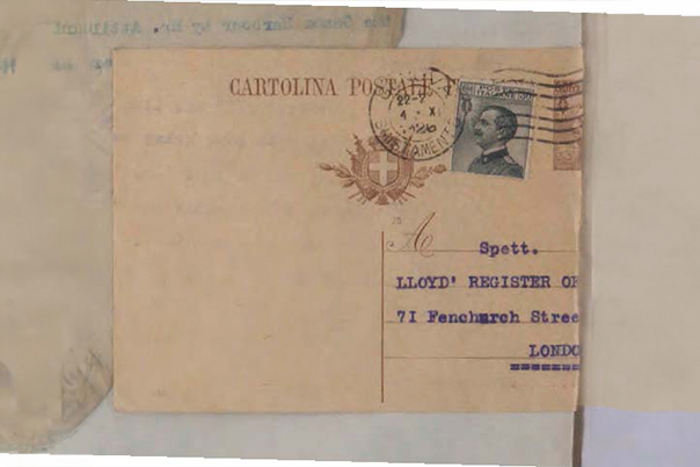
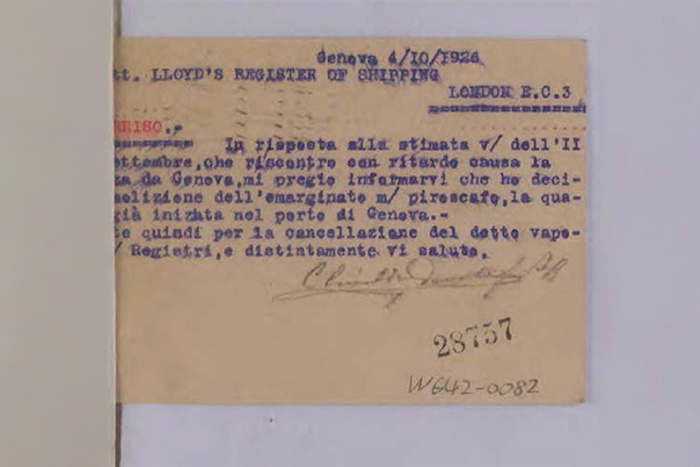
King Victor Emmanuel III & Sorriso
Finally, this original postcard featuring a stamp of Italian King Victor Emmanuel III concerns the breaking up of the steamship Sorriso. The postcard was written by shipowner Cloriade Devoto to LR’s London headquarters in October 1926.
About the Ship Plan and Survey Report Collection
What is it?
The Collection holds over 1,250,000 documents regarding the design, construction and maintenance of ships classed by LR.
How old is the Collection?
The unique archive dates from the 1830s-1970s.
What documents are held in the Collection?
The Collection holds everything from handwritten correspondence to survey reports, telegrams, forms and photographs.
Where is the Collection located?
Woolwich, London, UK.
How many different ships have been found in the Collection?
52,580
How long would it take Usain Bolt to run the length of the Collection, based on his world record 100 metre sprint?
54 seconds.
What is the largest document in the Collection?
A shade deck plan for Monmouth, dated 1898, measured five metres in length.
What is the largest digitised document in the Collection?
In terms of file size, the rigging plan for Acamas, dated 1895, is around 1.2 gigabytes in size.

